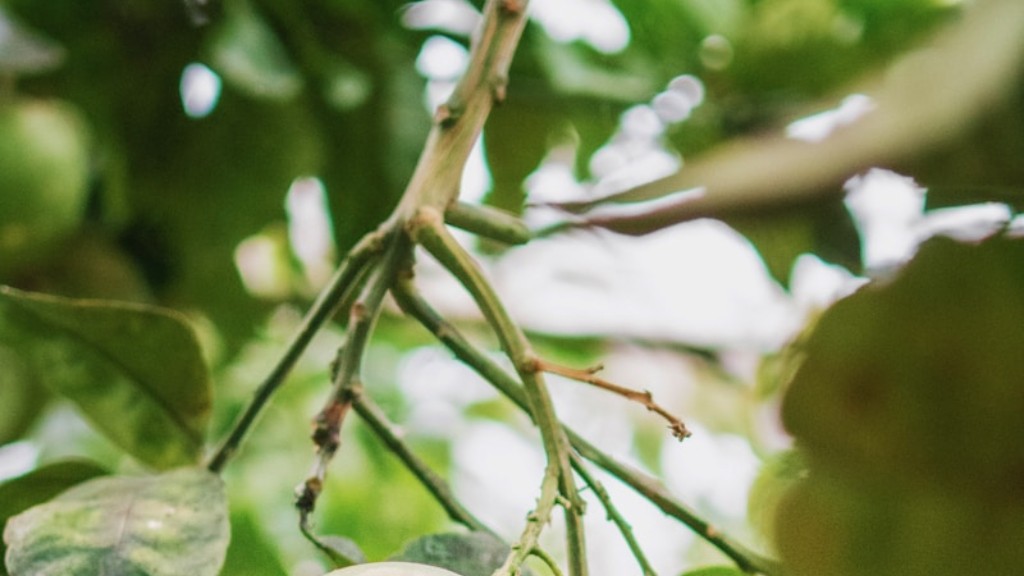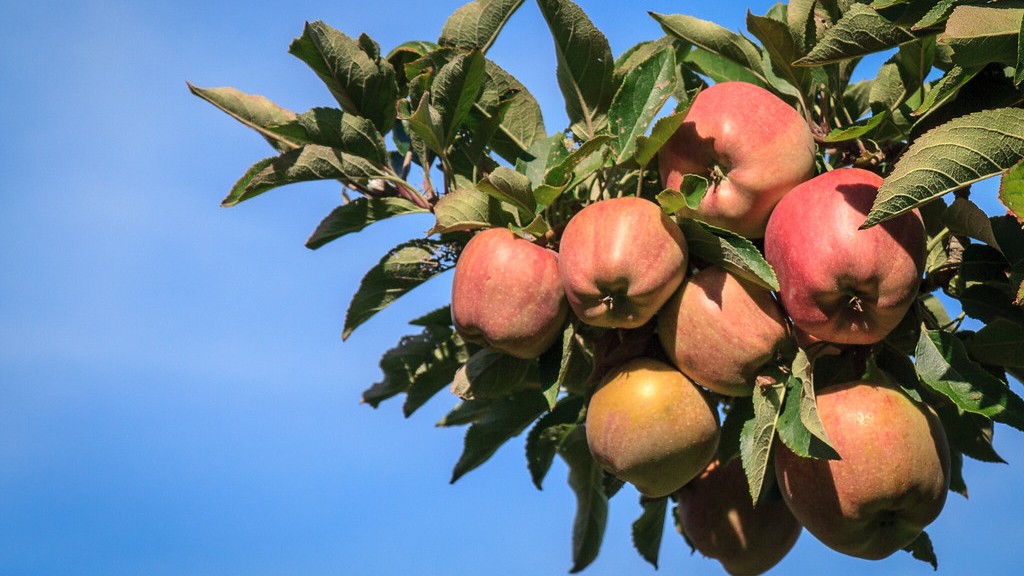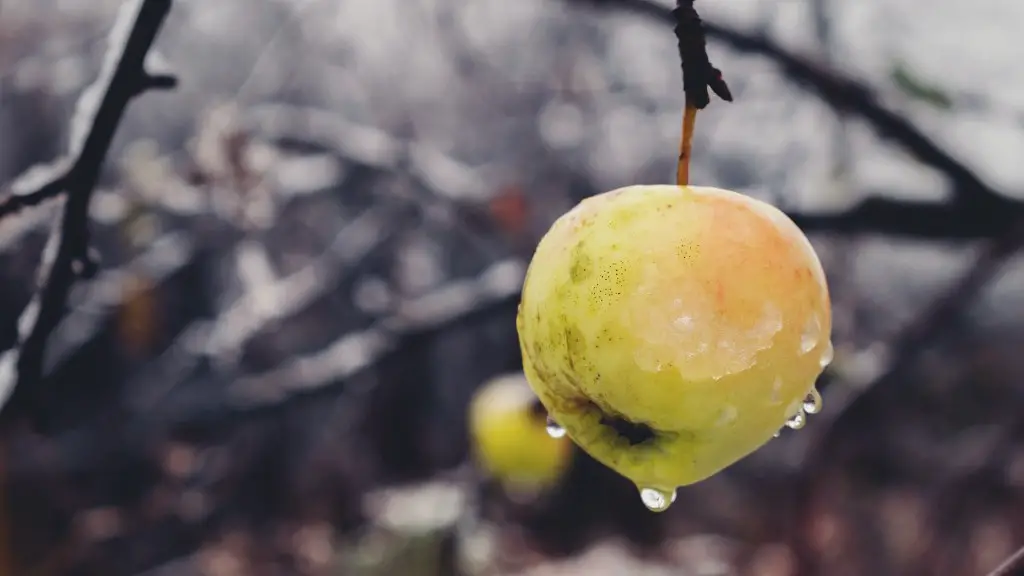Potted lemon trees are a great addition to any home. They not only look good, but they also produce delicious fruit. If you’re thinking about potting a lemon tree, there are a few things you should keep in mind.
To pot a lemon tree, first choose a pot that is at least 12 inches wide and has drainage holes in the bottom. Place a layer of gravel in the bottom of the pot, then add a planting mix formulated for citrus trees. Gently remove the tree from its current pot, taking care not to damage the roots, and place it in the new pot. Backfill with the planting mix, tamping it gently around the roots. Water well.
What kind of pot is best for lemon tree?
A terra cotta or unglazed ceramic pot is the best pot for a lemon tree. The pot should have drainage holes to promote well-drained soil and prevent root rot.
If you experience cooler weather during the fall and winter months, growing a potted lemon tree indoors is a great way to sustain the plant all year long. Since these trees are self-pollinating, only one is needed to produce fruit.
How big should a pot be for a lemon tree
When choosing a container for your citrus tree, it is important to consider the size of the tree. For small trees, a 12-inch-diameter container is perfect. For mature trees, you will need a pot that is double the width and at least 18 to 24 inches deep. This will give the roots plenty of room to grow and prevent the tree from becoming top-heavy and tippy.
Lemon trees need good drainage, consistent watering, and fertilizer to grow healthy in a pot. Make sure the pot has drainage holes and water the tree regularly to avoid leaf drop. Use a high-quality fertilizer to encourage strong growth.
Do lemon trees need big pots?
If you are planting a new citrus tree, be sure to choose a container that is large enough. If the container is too small, the young tree’s root system may not be able to develop properly and the tree may rot and die.
Water your Meyer Lemon Tree every one to two weeks, or when the soil feels dry to the touch 2 inches below the surface. Slowly pour water into the pot and count to 20, or wait until you see water running out of the bottom of the pot.
Do lemon trees want full sun?
Lemon Trees are a great low-maintenance plant and can grow perfectly even within your house! As a citrus variety, lemon trees require full sun, which means about 6 to 8 hours of direct sunlight daily For indoor growth, simply place them in front of a south-facing or sunny window.
Lemon trees require a lot of light to produce fruit, so the optimal place for one would be in a south-facing window. If you don’t have enough light, you can supplement with a grow light.
How do you keep a potted lemon tree alive
It’s important to keep your lemon tree watered, but allowing the soil to dry out between waterings is just as important. Allow the soil to dry out about 3 inches deep before watering thoroughly. This will keep the soil moist without being overly wet.
Lemon trees are a popular choice for both indoor and outdoor plants, as they are relatively easy to care for and can provide a fresh source of lemons for many years. However, lemon trees do have a finite lifespan, and usually only live for 30-50 years. Indoor potted lemon trees tend to have shorter lifespans than those planted in the ground outdoors, as they are more susceptible to stress and disease. With proper care, though, lemon trees can grow to over 100 years old.
When should you repot a lemon tree?
If you are not sure if your citrus plant is ready to be repotted, a good rule of thumb is if it is more than 2 and a half times the height of the pot. Potting should ideally take place in the spring or early summer when the plant begins to show signs that it is growing.
Lemon trees are susceptible to a number of diseases and pests, which can cause problems for the plant. Lesions on leaves, black moldy spots, fuzzy gray mold, and brown scabs are all potential problems that can be caused by diseases or pests. To prevent these problems, it is important to regularly inspect your lemon tree for signs of pests or disease. If you see any potential problems, treatment should be started immediately.
How cold is too cold for a potted lemon tree
Lemon, lime and citron trees are among the least cold tolerant trees and can be susceptible to damage when temperatures drop below 25 degrees Fahrenheit. Early ripening varieties can be planted so that the fruit may be harvested before colder weather arrives.
Misting your lemon tree can help reduce loss of moisture and help prevent your plant’s leaves from drying out. You can mist your lemon tree as often as you think about it, but once or twice a day is usually adequate.
How do you tell if you’re overwatering your lemon tree?
If you notice any of these signs in your lemon tree, it is likely that it is being overwatered. Yellowing leaves, chlorosis, weak branches, and root rot are all indications that your tree is not getting the proper drainage it needs and is overwatered. If you suspect your lemon tree is overwatered, take steps to improve drainage and water less frequently.
Lemon trees prefer a climate with temperature range being between 70-100 degrees. Once temperatures rise above 103 degrees, the lemon tree will stop growing, or photosynthesizing, causing it to go somewhat dormant. If the heat lasts for very long, it can cause the tree to drop fruit.
Should I cover my lemon tree in cold weather
If a hard freeze is on the way, there are several things you can do to help protect young citrus trees from cold damage. Wrap the trunk in cloth or bubble wrap. Use tarps, old blankets or plastic sheeting to wrap the tree.
If you are overwatering your lemon tree, it is likely that you will see yellow, curled leaves as a result. The tree’s roots may also decay, and the tree may not recover. Insufficient water can also be harmful to your lemon tree. If the soil is constantly dry, it can cause the tree to acquire a disease. As a result, your lemon tree may not produce fruit or may not be as productive as it could be. Proper watering is essential to keeping your lemon tree healthy and productive.
Final Words
There are a few things to keep in mind when potting a lemon tree. The tree will need a well-draining pot with a hole in the bottom, and it is important to use a potting mix that is designed for citrus trees. Be sure to water the tree regularly, and fertilize it every few months with a citrus fertilizer.
When potting a lemon tree, it is important to use a well-draining potting mix and a pot with drainage holes. The tree should be watered regularly, but allowed to dry out between waterings. Fertilizer should be applied monthly during the growing season.




